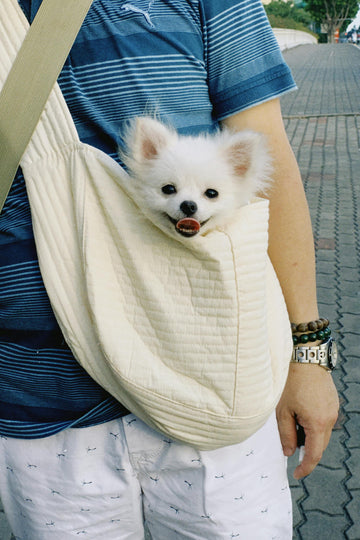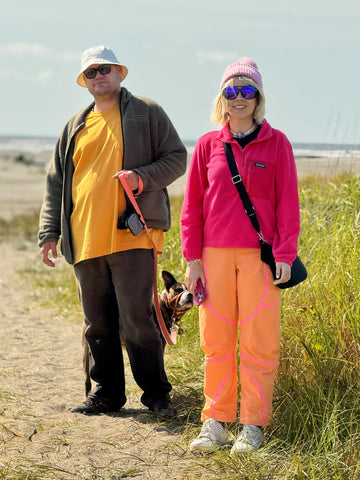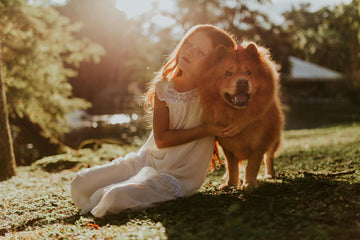For most pet owners, dogs are more than just animals—they're family. Whether you're caring for a tiny puppy, a senior dog with mobility issues, or a small breed that tires easily, dog slings offer a practical, comfortable, and stylish way to carry your furry companion. In this comprehensive guide, we’ll explore everything you need to know about dog slings, from their types and benefits to how to choose and use one.
What Is a Dog Sling?
A dog sling is a pet carrier that allows you to carry your dog close to your body using a hands-free pouch-style design. It typically wraps over one shoulder and across the chest, allowing your dog to rest comfortably inside the pouch at your side or front.
Dog slings are best suited for small to medium-sized dogs, usually under 15-20 pounds. They come in a range of styles, materials, and features to suit different needs, from casual outings to medical support.
Who Needs a Dog Sling?
Dog slings are especially helpful for:
✅ Small breed dog owners (Chihuahuas, Yorkies, Pomeranians, etc.)
✅ Senior dogs with joint issues or arthritis
✅ Puppies not yet trained to walk long distances
✅ Injured or disabled dogs
✅Traveling pet owners
✅Dogs with anxiety who prefer closeness to their owners

Benefits of Using a Dog Sling
1. Convenience and Mobility
Dog slings offer hands-free carrying, which is great for multitasking or navigating crowded areas. You can walk, shop, or even do light chores while keeping your dog secure.
2. Comfort for You and Your Pet
High-quality slings are padded and made from soft, breathable fabric that provides comfort for your dog. Adjustable straps also make them easier on your shoulders.
3. Security and Bonding
Carrying your dog close to your chest increases the sense of security for nervous or anxious pets. It also enhances the human-animal bond.
4. Great for Special Needs Dogs
Whether your dog has arthritis, is recovering from surgery, or can’t walk due to injury, a sling allows them to remain part of your daily life without strain.
5. Ideal for Puppies and Elderly Dogs
Dog slings are excellent for short-legged puppies and elderly dogs who can’t handle long walks or stairs but still enjoy getting out and about.

Types of Dog Slings
Dog slings come in various styles, and choosing the right one depends on your dog’s needs, your lifestyle, and personal comfort. Here are the most common types:
1. Shoulder Slings (Pouch Slings)
✅ Worn over one shoulder like a crossbody bag.
✅ Dog rests inside a deep fabric pouch.
✅ Best for small dogs (up to 15 lbs).
✅Usually made of cotton, mesh, or fleece.
2. Adjustable or Reversible Slings
✅ Reversible slings are two-sided, often featuring different colors or materials.
✅ Adjustable slings allow you to modify the strap length for a better fit and balance.
3. Structured or Padded Slings
✅ Includes padding for extra comfort.
✅ May have reinforced bottom or inner lining for better support.
✅ Great for dogs with injuries or long trips.
4. Sling with Safety Features
✅ Includes safety leash clip, zippers, or drawstrings to secure the dog inside.
✅ Ideal for energetic or anxious dogs who might jump out.
5. Fashion Slings
✅ Designed with style in mind.
✅ Includes patterns, decorative elements, or even matching human accessories.
✅ Combines function with flair for fashion-conscious pet parents.

How to Choose the Right Dog Sling
1. Size and Weight Capacity
Always check the weight limit of the sling. Ensure it can support your dog’s full weight without sagging or tearing. Measure your dog’s length and height to ensure a good fit.
2. Material
✅ Cotton and fleece: Soft and breathable; good for comfort.
✅ Mesh: Better for hot climates as it allows airflow.
✅ Padded fabric: Adds support but can be warmer.
✅ Water-resistant materials: Ideal for rainy weather or active outings.
3. Adjustability
Look for slings with adjustable straps for comfort and even weight distribution. Some slings also include buckles or Velcro for a customizable fit.
4. Safety Features
✅ Leash clips to attach to your dog’s collar or harness.
✅ Zippers, buttons, or drawstrings to prevent jumping out.
✅ Reinforced stitching for durability.
5. Washability
Since slings can get dirty quickly, machine-washable materials are a must. Look for slings with removable padding or easy-to-clean linings.
6. Portability
Foldable and lightweight slings are easier to carry when not in use. Some even come with storage pouches or bags.

Top Dog Sling Brands in the Market
While the market is full of dog sling options, some popular and trusted brands include:
✅ YUDODO Pet Dog Sling Carrier
✔️ Breathable mesh
✔️ Safety strap and zipper
✔️ Ideal for summer
✅ TOMKAS Dog Sling Carrier
✔️ Reversible, cotton fabric
✔️ Safety belt and snap closure
✔️ Machine washable
✅FurryFido Adjustable Pet Sling
✔️ Adjustable shoulder strap
✔️ Safety collar hook
✔️ Lightweight and compact
✅iPrimio Dog Carrier Sling
✔️ Extra soft fabric
✔️ Reinforced edges
✔️ Hidden pocket for treats or phone
How to Use a Dog Sling Safely
Step-by-Step Guide:
➊ Put the sling over your shoulder with the pouch part resting at your side or in front of you.
➋ Open the sling wide to create a comfortable nest.
➌ Gently lift your dog and place them inside the pouch.
➍ Secure your dog with any internal leash clips or fasteners.
➎ Adjust the strap to evenly distribute weight and prevent strain.
➏ Check regularly to ensure your dog is breathing comfortably and isn’t overheating.
Common Mistakes to Avoid
⟶ Using a sling that's too small or too big for your dog.
⟶ Ignoring safety straps can lead to potential falls.
⟶ Overheating your dog in warm weather without ventilation.
⟶ Using the sling for large or heavy dogs—they’re not designed for this.
⟶ Not checking for tears or wear that may compromise safety.
When Not to Use a Dog Sling
⟶ If your dog has severe spinal or back issues, consult a vet first.
⟶ For very large dogs—opt for strollers or backpack carriers instead.
⟶ If your dog is highly energetic or dislikes confinement, a sling might not be suitable.
Alternatives to Dog Slings
If a sling doesn’t work for you or your pet, consider:
✔️ Pet backpacks – Good for longer hikes and heavier dogs.
✔️ Dog strollers – Ideal for older or injured dogs.
✔️ Tote-style carriers – Stylish and good for travel.
✔️ Harnesses with lift support – Help with mobility for senior dogs.
Conclusion
A dog sling is more than just a pet accessory—it’s a mobility aid, a comfort zone, and a bonding tool for dog and owner. Whether you're an urban pet parent navigating a busy city, or simply looking to give your senior or special-needs dog the love and support they deserve, a dog sling can make a world of difference.
With so many options available, it’s essential to choose one that fits your dog’s size, temperament, and your lifestyle. From comfort and convenience to health benefits and bonding, the right sling can help you and your dog explore the world together safely and stylishly.

FAQs About Dog Slings
1. Can I use a baby sling for my dog?
No. Baby slings are designed for human infants and do not have features like leash clips or escape-proof closures suited for dogs.
2. How long can my dog stay in the sling?
Ideally, limit to 30–60 minutes at a time, depending on your dog’s comfort. Let them out to stretch, hydrate, and potty.
3. Can I carry my dog in a sling while biking?
It’s not recommended unless the sling is specially designed and secured for biking. Use pet-specific bike carriers instead.
4. Is a sling good for taking dogs on planes?
Some airlines allow small dogs in soft-sided carriers. While slings may not meet airline requirements, they’re useful while walking through terminals.








